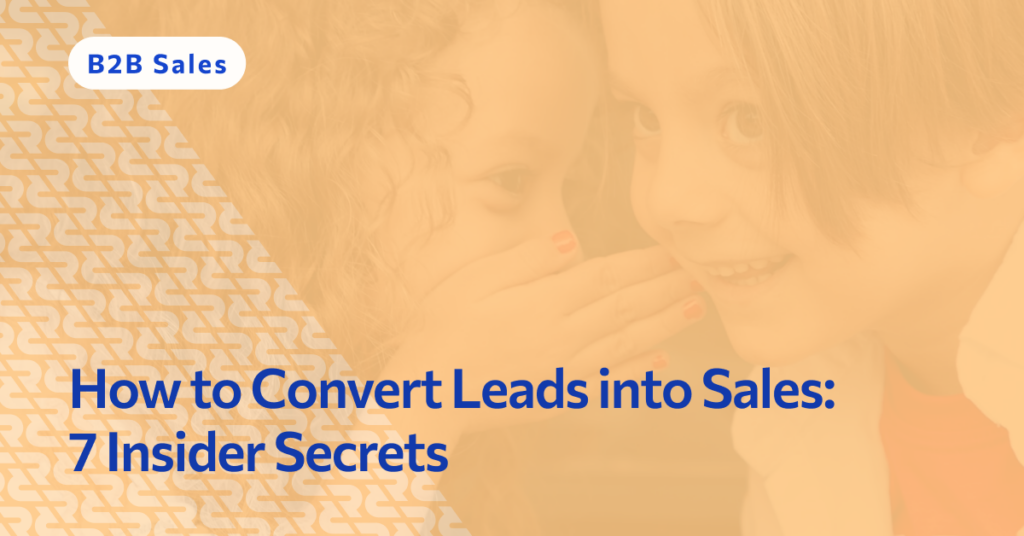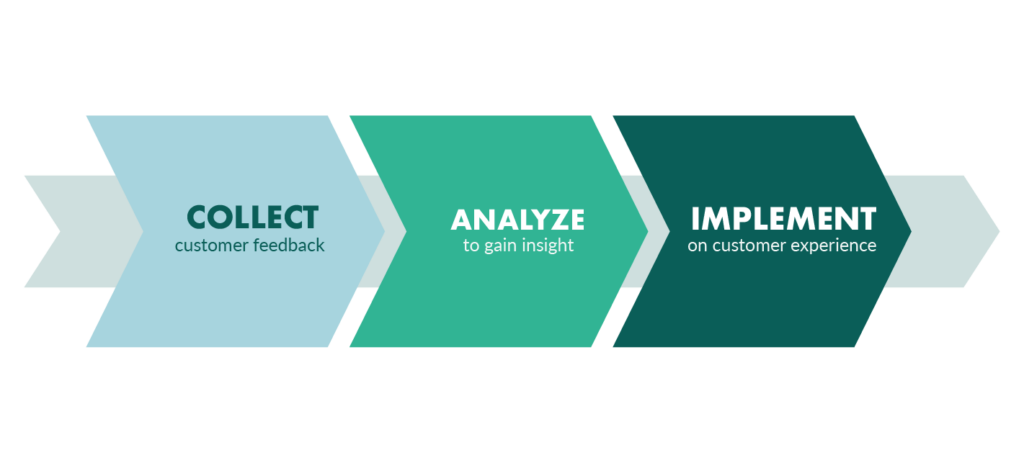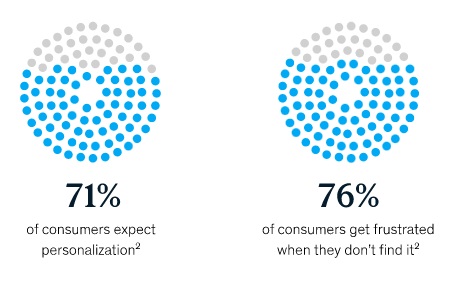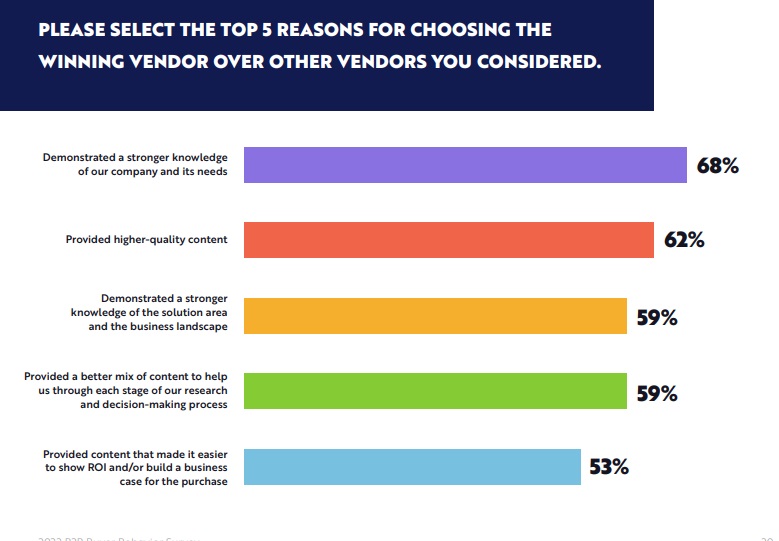How to Convert Leads into Sales: 7 Insider Secrets

Generating leads is the first of many steps to successfully winning new business. To truly see results, you need to know how to convert leads into sales — consistently. Sales, not just meetings. No matter how you break it down, the objective is to move leads through the sales funnel efficiently and ultimately get them to buy.
Buyer expectations for a great brand experience are bigger than ever. To win leads over your competitors you need to get hyper-targeted, personalized, data-driven, and customer-centric (among other key focus areas).
In this guide, we’ll highlight 7 insider secrets for going beyond the pipeline management status quo to convert more leads and ultimately earn more revenue for your business.
Quick Takeaways
- 80% of buyers are willing to pay more for a superior experience. Use VOC data to understand what they expect.
- To gain insights, keep a close watch on competitors’ landing pages, lead nurturing tactics, promotional strategies, and customer feedback.
- 75% of buyers demand personalized experiences and get frustrated when they are missing them. Make personalization a necessity in your outreach.
- Buyers engage with over 13 content pieces during their journey. High-value content is essential for conversions.
- Lead scoring is key. Prioritize the most qualified leads to increase your chances of closing.
- Play the long game. Focus on solving customer problems rather than going straight for the hard sell.
- “No” isn’t final. Learn to handle rejections strategically to keep future opportunities open.
Understanding Lead Conversion
Lead conversion is about turning a prospective client—often discovered through marketing efforts—into a paying customer. This critical step involves nurturing the lead through various stages, like engaging them with compelling content, crafting personalized communication, and addressing their needs.
A study by WordStream found that the average lead conversion rate is around 2.35%, based on an analysis of thousands of Google Ads accounts across different industries. While this figure offers a helpful benchmark, conversion rates can vary widely depending on your industry, target audience, and the specific strategies you employ. Aiming for a conversion rate between 2% and 5% is a solid goal!
While the process isn’t always linear, this framework is a great starting point for your approach. The most important aspects of lead conversion include:
- Generating interest. Start by capturing potential customers’ attention through eye-catching ads, engaging content marketing, email campaigns, or lively social media interactions.
- Nurturing leads. Once you’ve sparked that interest, keep it alive by providing valuable information and consistent follow-ups through emails, calls, or targeted content that keeps them engaged.
- Building trust. Interact with leads through personalized messages, demos, or consultations, making them feel heard and valued.
- Collaborating. Collaboration between marketing and sales teams is a must. Creating a smooth and persuasive lead journey means both teams play a crucial role in transforming prospects into loyal customers.
- Closing the deal. Seal the deal by addressing any lingering objections head-on and confidently securing that commitment.
Remember, the path to conversion may twist and turn, but this outline gives you a solid foundation to build.
How to Convert Leads into Sales: 7 Insider Secrets
Level Up the Buyer Experience with VOC Data
The experience you provide for potential buyers and current customers matters just as much (if not more) than the products and services you deliver. Forbes reports that 48% of buyers are willing to pay more for a better experience, and 70% will walk away from a brand they love after just a single bad experience.
The thing is, your buyers’ experience shouldn’t be a guessing game. Even if you think you know what buyers are looking for from your brand, it’s likely you don’t have the full picture. The only way to get it is with voice of customer (VOC) data.
VOC data comes directly from the customer and is based on their feedback about your brand, including your messaging, offerings, and overall experience provided. It gives you key insight into the perspective of buyers and customers — insight you can use to optimize their experience, boost initial sales conversions, and increase upselling/cross-selling opportunities.
There are three primary steps required to leverage VOC data:
Collection
Use surveys, social listening, interviews, and testimonials to learn what your buyers and customers say about your brand. Engage with your angry and happy customers, as their feedback can reveal contrasting perspectives that help you refine your lead scoring and qualification process. Happy customers can provide insights into what motivates their loyalty. In contrast, feedback from unhappy customers can uncover common objections and pain points, giving you a fuller understanding of the buyer’s journey.
Analysis
Look for new information, trends, and other insights to help you continually improve the experience you provide and quickly address common issues or concerns. Analyze the data to identify patterns in feedback, like frequent complaints or recurring praises. This can help you recognize what aspects of your offerings resonate with buyers and which areas need adjustment. Use sentiment analysis tools to gauge overall customer emotions and attitudes towards your brand, helping you understand broader market trends.
Implementation
Make a plan and take action on the insight you uncover. Prioritize changes based on the potential impact on customer satisfaction and sales conversion rates. Create actionable strategies, such as revising your messaging based on feedback, improving support resources, or addressing common objections in your sales pitch. Additionally, consider setting up regular follow-ups with customers to ensure ongoing engagement and gather new feedback, keeping your approach dynamic and responsive.
With this information, you can adjust your messaging and content to make your outreach feel more personal and on point. For example, if you spot a common question or issue in customer feedback, why not create content that speaks directly to that? This approach not only helps you refine your keyword strategy but also makes sure you’re connecting with your audience in a meaningful way.
Optimizing the customer experience using VOC data has a significant long-term impact. It leads to higher lead-to-sale conversion rates and retention rates and can even boost referrals, widening your brand reach and network-driven sales volume.
As you accumulate more data, use it to improve your overall sales process gradually. You don’t necessarily need to go for home runs, but even minor adjustments can add up. Over time, these incremental changes contribute to a more efficient, effective sales process, directly impacting your bottom line.

The long-term impact of optimizing the customer experience using VOC data is significant. It leads to higher lead-to-sale conversion rates, higher retention rates, and can even boost referrals, widening your brand reach and network-driven sales volume.
Keep an Eye on Competitors
Understanding how your competitors convert leads into sales is a powerful way to sharpen your strategy. Here’s how you can gather valuable insights:
- Start by analyzing their landing pages. Look at the information they highlight to grab attention. How are they presenting their value? What design choices, layouts, or call-to-action phrases are they using? Are they zeroing in on pain points or specific benefits?
- Next, explore their lead nurturing tactics. Subscribe to their newsletters and observe their email campaigns. Pay attention to how often they communicate, the type of content they share, and the level of personalization. Are they offering free trials, educational content, or exclusive deals to keep prospects engaged?
- Promotional strategies are also great to look into. Keep an eye on their social media channels and advertising campaigns. Are they running limited-time discounts, bundling products, or tapping into influencer endorsements?
- Don’t forget to dive into customer reviews and feedback – essentially, your competitor’s VOC. These can give you a deeper understanding of what customers appreciate or dislike about their services and where you might have a chance to outperform them.
Hyper-Personalize Sales Interactions
Personalization is no longer a nice-to-have when you’re working to convert online leads to sales — it’s a baseline buyer expectation. McKinsey research found that 71% of buyers expect personalization when they interact with brands and 76% are frustrated when they don’t find it.

To convert leads into sales at a higher rate, you need to personalize the experience to each individual buyer. Fortunately, thanks to sales and marketing automation tools, personalization can be done at scale without becoming time consuming or tedious.
Here are a few ways to do it:
- Segment your leads — Categorize sales leads by important traits like industry, need, products/services of interest, budget, and other important traits.
- Leverage data — Take a data-driven approach to list creation and targeted email, ad, and other outreach campaigns.
- Go the extra mile for top prospects — Use account-based marketing (ABM) to target key high-potential accounts with highly individualized approaches and personal outreach.
- Share customized content — Deliver content aligned with customer needs that can help them solve their problems (even prior to purchase).
- Choose impactful ad formats and CTAs—To boost conversions, Select ad formats that resonate with your audience and pair them with effective CTAs.
- Highlight your unique value — Convey what sets you apart and how your solutions address their specific challenges.
Make Content an Active Part of Your Strategy
Speaking of content — it needs to be much more than a somewhat passive inbound marketing strategy if you want to power more conversions in your sales pipeline. There’s no doubt content has the power to attract the right buyers through channels like social media and search.
But you can make it a central part of your outbound sales efforts, too — and a secret weapon for converting more sales — by sharing it in an intentional way with your leads. And since buyers love sales content (they engage with 13+ content assets during their purchase journey, on average), using content as a conversion tool also aligns with the experience they want.
To truly understand how your content is impacting potential customers, monitor your sales pipeline. This will help you see which pieces of content are resonating and where you might need to change things up to improve engagement.
Also, consider running some A/B tests to experiment with different content types and calls to action. This way, you can discover what clicks with your audience and adjust your strategy accordingly for even better results.
Score and Prioritize Leads Effectively
Businesses often think the best strategy is to give the same level of effort and engagement to every lead that comes through the pipeline, but the reality is that not all leads are equal, and they’re not all ready for the same type of outreach.
Some come into the pipeline with high purchase intent and readiness for sales communications, but others need a fair amount of nurturing before they’ll be ready to buy. Still others may have filled out a form or engaged with your brand in some way online, but aren’t really a good fit for what you have to offer.
To avoid wasting time chasing unqualified leads (and potentially leaving qualified ones hanging), put a strong lead scoring and qualification process in place so you can prioritize the leads in your pipeline with the highest likelihood to convert.
Lead scoring assigns point values to leads based on behavioral and ICP-related traits you have identified as making them best-fit for your solutions. Qualification determines which stage of the pipeline they belong in at the time of entry (i.e. marketing qualified, sales accepted, or sales qualified).
You can use the insights from your lead scoring system to equip your sales team with actionable tips on improving conversion rates. For example, if certain behaviors (like website visits or content downloads) score higher, create targeted follow-up actions or content tailored to those engaged prospects. Furthermore, analyzing which lead sources yield the highest conversions can help you focus your marketing efforts more effectively.
Fortunately, you can execute both processes efficiently by automating them through your CRM and other sales software tools.
Ditch the Hard Sell and Focus on Problem Solving
While we would all like to think buyers choose our brands because we have the best solutions (and many do), they ultimately choose providers who best demonstrate that they understand and can solve their unique problems.
One study found that 68% of B2B buyers said they chose their current vendor over others because they showed “stronger knowledge of our company and its unique needs.”

To convert leads to sales at a higher rate, train your sales reps to conduct problem-focused sales discussions, during which they learn about individual buyers and share ways that your solutions can address their problems. This can feel counterintuitive — after all, sales reps want to use the time they get with buyers to share what’s so great about your offerings.
There will undoubtedly be a time when those come up in conversation, but let it happen organically after you’ve taken the time to connect with customers first by learning about their needs. Starting problem-solving discussions on platforms like LinkedIn and Facebook can help you identify these needs early on while establishing a connection.
Since buyers conduct most of their research independently before reaching out to a sales team, they’re often already familiar with the key information you’d share in a hard sales pitch—things like competitive pricing, product features, and exceptional service. So, instead of reiterating what they already know, focus on demonstrating your understanding of their needs at that moment. Offer custom insights and solutions during conversations, positioning yourself as a trusted advisor rather than just another vendor.
Don’t Let “No” Be the End of the Road
Hearing “no” at the end of an engagement with a high-potential lead is no fun — and we’ve all been there. But a mistake too many sales reps make is assuming that an initial “no” means that all hope for a conversion is lost.
Before we go on, let’s make one thing clear: We’re not saying be too pushy when you hear no from a lead. It’s important to respect a buyer’s decision. But there are good ways to respond to a no that can help maintain a relationship and even earn a conversion down the line.
Tactics like asking for a smaller yes (a lower commitment that may or may not involve a purchase), collecting data that can help you follow up again effectively down the line (like when their current vendor contract expires), or even just learn from the experience to convert the next similar opportunity.
You can also target similar audiences, nurturing relationships with leads that share traits with your initial prospects. Even if a prospect isn’t ready to buy now, they might know others in their network who are. Also, consider using remarketing strategies for those who showed initial interest but didn’t convert. You can re-engage them at the right time by following up with content that addresses their specific needs or pain points.
The takeaway is that you can convert more leads when you respond strategically to an initial no — especially when it comes from a high potential account. There’s a reason people say to never burn a bridge, and simply keeping the relationship alive can be enough to convert that very lead or someone in their network at a later date.
Over to You
Ready to implement these killer lead conversion secrets to give your pipeline a boost? RevBoss can help you go a step further by ensuring the leads you generate are qualified and best-fit for your solutions.
Our outbound email software and lead gen services are custom-built for startups, consultancies, marketing agencies, and other growing B2B organizations.
Schedule a quick call with us and find out how we can help you win more clients.
